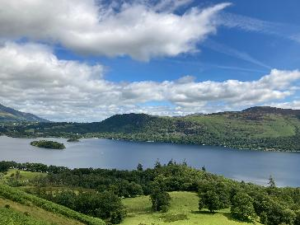The Peak District, located in the heart of England, is renowned for its stunning landscapes, picturesque villages, and rich cultural heritage. However, the weather in this national park can be as variable as its topography. Whether you’re planning a hiking trip, a weekend getaway, or simply want to understand the climate of the Peak District, this comprehensive guide will provide you with all the information you need.
Overview of the Peak District Climate
The Peak District experiences a temperate maritime climate characterized by mild summers, cool winters, and relatively high rainfall throughout the year. Due to its elevated terrain, the weather can change rapidly, so being prepared is essential for anyone visiting.
Monthly Breakdown of Peak District Weather
January: A Cold Start: January is one of the coldest months, with average temperatures between 1°C and 7°C (34°F to 45°F). Snowfall is common, particularly in higher areas, making it a great time for winter sports. However, be prepared for icy paths and slippery roads.
February: Frosty and Wet: February remains cold, with average temperatures similar to January. Rainfall is frequent, and occasional snow showers can still occur. The days start to lengthen, giving a hint of spring.
March: Transition to Spring: March marks the beginning of spring, with temperatures ranging from 3°C to 10°C (37°F to 50°F). The weather can be unpredictable, so it’s wise to dress in layers. Rain is still frequent, but sunny days are becoming more common.
April: The Blooming Season: April is generally mild, with temperatures ranging from 5°C to 13°C (41°F to 55°F). As flowers begin to bloom, the landscape transforms into a colorful tapestry. However, it’s still advisable to carry waterproof clothing due to sporadic rain.
May: Warming Up: May brings warmer temperatures, averaging between 8°C and 17°C (46°F to 63°F). The likelihood of rain decreases slightly, making it an excellent month for hiking and outdoor activities.
June: Early Summer: June kicks off the summer season, with temperatures averaging between 11°C and 20°C (52°F to 68°F). This is one of the driest months, making it ideal for exploring the park’s vast hiking trails. However, sudden rain showers are still possible.
July: Peak Summer: July is typically the warmest month, with temperatures ranging from 14°C to 22°C (57°F to 72°F). While it can be sunny, thunderstorms may occur. This month is perfect for picnics, barbecues, and outdoor festivals.
August: Late Summer: August remains warm, with similar temperatures to July. However, it can also be quite humid, and occasional rain showers are likely. The days are still long, making it a great time to explore the Peak District.
September: Autumn Begins: September marks the beginning of autumn, with temperatures cooling to between 11°C and 19°C (52°F to 66°F). As the leaves start to turn, breathtaking views are provided. Rainfall increases again, especially towards the end of the month.
October: Falling Temperatures: October sees average temperatures dropping between 8°C and 14°C (46°F to 57°F). Autumn is in full swing, and the landscapes are ablaze with fall colors. It can be wet, so waterproof gear is essential.
November: Late Autumn: November is often chilly and damp, with temperatures ranging from 4°C to 10°C (39°F to 50°F). The likelihood of rain increases, and days become noticeably shorter.
December: Festive Chill: December can be quite cold, with average temperatures between 2°C and 7°C (36°F to 45°F). Snow is possible, especially in higher elevations, creating a magical winter atmosphere perfect for holiday festivities.
Clothing and Preparation Tips
When planning a visit to the Peak District, it’s essential to pack appropriately for the weather conditions. Here are some tips for clothing and preparation:
Layering is Key: The weather can change quickly in the Peak District, so it’s best to dress in layers. A good base layer, mid-layer for insulation, and a waterproof outer layer will keep you comfortable in various conditions.
Waterproof Gear: Given the likelihood of rain, a waterproof jacket and trousers are essential. Consider water-resistant footwear for hiking trails, especially in muddy areas.
Sun Protection: Even on cooler days, UV rays can be strong, especially during summer. Bring sunglasses, sunscreen, and a hat for sun protection during outdoor activities.
Navigation Tools: Weather can affect visibility, so having a map or GPS device is crucial for hiking. Always check weather forecasts and trail conditions before heading out.
Emergency Supplies: Pack essential supplies like a first aid kit, water, snacks, and a fully charged mobile phone. Being prepared for sudden weather changes can enhance your safety.
Activities to Enjoy in Different Weather
The Peak District offers a range of activities that can be enjoyed regardless of the weather. Here are some popular activities suited to different conditions:
Hiking: The Peak District boasts numerous trails for all levels of hikers. In spring and summer, trails like the Kinder Scout and Stanage Edge provide breathtaking views and vibrant landscapes. In autumn, the colorful foliage enhances the beauty of the trails, while winter offers a unique and serene hiking experience.
Cycling: Cycling is a popular way to explore the Peak District, with various routes catering to different skill levels. During the warmer months, the Tissington Trail and Monsal Trail are favorites, providing scenic rides through the countryside.
Rock Climbing: The gritstone edges of the Peak District attract rock climbers from around the world. Climbing is best enjoyed in the drier months, while winter climbing can be adventurous for experienced climbers.
Photography: With its stunning landscapes, the Peak District is a haven for photographers. Each season offers unique photographic opportunities, from snow-covered hills in winter to vibrant wildflowers in spring.
Visiting Local Attractions: In case of inclement weather, exploring local attractions like Chatsworth House, Haddon Hall, and charming villages like Bakewell and Castleton can provide a wonderful experience.
Safety Considerations: While the Peak District is a fantastic place for outdoor activities, visitors should prioritize safety, especially in unpredictable weather:
Weather Forecasts: Check the weather forecast before your visit and monitor conditions throughout your stay. Various websites and apps provide up-to-date information on temperature, rainfall, and wind conditions.
Trail Conditions: Be mindful of trail conditions, particularly after heavy rain or snow. Muddy or slippery trails can pose risks, so consider opting for alternative routes if conditions are poor.
Wildlife Awareness: While enjoying the outdoors, be aware of local wildlife. Keep a safe distance from animals and avoid feeding them, as this can disrupt their natural behavior.
Inform Others: When heading into remote areas, inform someone about your plans and estimated return time. This is particularly crucial if you’re going trekking by yourself.
FAQs
What is the general climate like in the Peak District?
The Peak District has a temperate maritime climate, characterized by cool summers and mild winters. The area experiences a fair amount of rainfall throughout the year, making it lush and green. The weather can change quickly, so it’s advisable to be prepared for varying conditions, especially if you’re planning outdoor activities.
What is the best time to visit the Peak District for good weather?
The best time to visit the Peak District for pleasant weather is during late spring (May to June) and early autumn (September to October). During these months, temperatures are generally mild, and rainfall is less frequent, making it ideal for hiking and exploring.
Conclusion
The weather in the Peak District is a significant aspect of the region’s allure, influencing the landscape, activities, and visitor experiences. From the blooming beauty of spring to the serene snow-covered hills of winter, each season offers a unique perspective of this stunning national park.
By understanding the weather patterns and preparing accordingly, visitors can enjoy everything the Peak District has to offer, regardless of the conditions. Whether you’re hiking through its trails, cycling along scenic routes, or simply taking in the breathtaking views, the Peak District promises an unforgettable experience in nature’s embrace.
To read more, Click Here .







